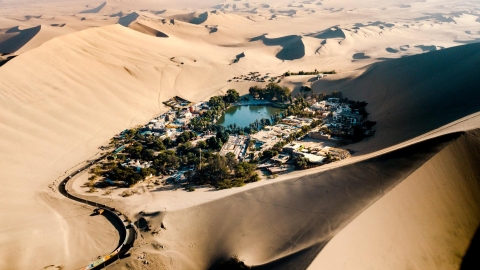For most of the summer on the Danish island of Læsø, Henning Johansen is busy at work. An islander, Johansen works as a roofer. But on Læsø, the job of a roofer is unlike any other.
Located 12 miles northeast of the coast of Jutland, this island, which appears in Norse mythology as the home of the giant Ægir (Aegir, meaning Sea), is surrounded by shipwrecks and is mentioned in Danish maritime history. But Læsø’s most distinctive feature is its houses, which are roofed with thick, heavy bundles of silver seaweed.
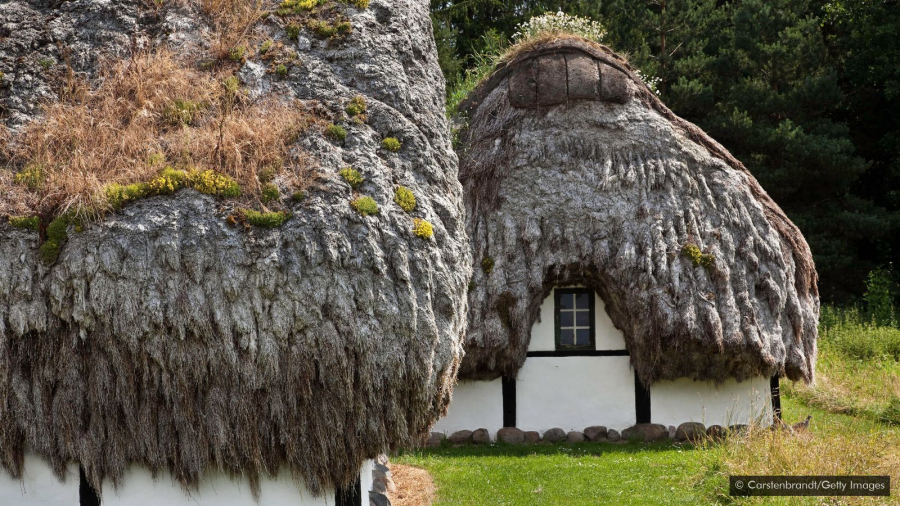
Læsø is the only place in Denmark with eelgrass roofs.
Seaweed roofing has been used on the island of Læsø since the 17th century and is famous worldwide for its uniqueness, although seaweed roofs have also been seen in Scotland’s Orkney Islands. Læsø, which had a thriving salt industry, was suffering from deforestation – the trees were burned to fuel the salt kilns – so the islanders needed to find an alternative roofing material. The island itself was resource-poor, with much of its mudflats and sandbanks being difficult to work with, so the islanders began looking out to sea.
Driftwood salvaged from shipwrecks can be used for building, and the abundant eelgrass (zostera marina) that people collect from the shore can be used for roofing. Until the early 20th century, most islanders' houses were thatched with seaweed. But after a fungal disease wiped out most of the eelgrass in the 1920s, knowledge of thatching techniques gradually faded. Today, only 36 seaweed-roofed houses remain on the island of 1,800 people.
Since 2012, Johansen has been reviving the skill by replacing roofs, the first in his generation to do so. “It’s one of the greatest parts of Læsø’s history, so it’s very important for the island,” he tells me over the phone while roofing a house. “It was women’s work before,” he adds, explaining that since most of the island’s men were seafaring, women stayed home to look after the farms and homes. “They were alone on the island and had to look after themselves. They figured out how to make these roofs, and they don’t exist anywhere else in the world. So of course we’re very proud of this heritage.”
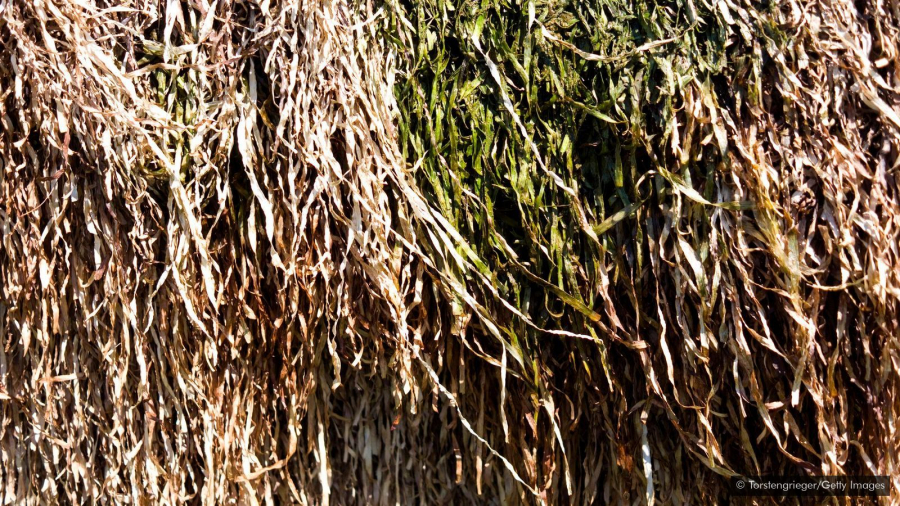
Eelgrass is a carbon-neutral building material when harvested and used on the island.
Between 40 and 50 women would work together to thatch a roof. They would harvest seaweed after autumn storms and spread it out in the fields to dry for about six months, a step that would remove microscopic algae and prevent the seaweed from rotting. When they began building, they would take eelgrass, which looked a little like wool, twist it into large bundles (called vasks), and tie them to the rafters to form the underlay. They would then pile more layers of seaweed on top of the first layer and coat it with peat to hold it together: an average roof was about 1 meter thick and weighed 35 to 40 tons. The women would then bring chairs to the newly made roof, where they would sit and look out at the treeless horizon for shipwrecks (which they might salvage) and walk around, even dance, on the seaweed to keep it pressed together.
Johansen says they can do a roof in a day. With his five-person roofing crew, it usually takes him about 21 days. “Because I don’t have 50 women.”
But Johansen's quest to revive this seaweed-thatching technique isn't just for conservation purposes. "Eelgrass is a very interesting material," he says, "because it doesn't burn, there's so much salt in the stalks."
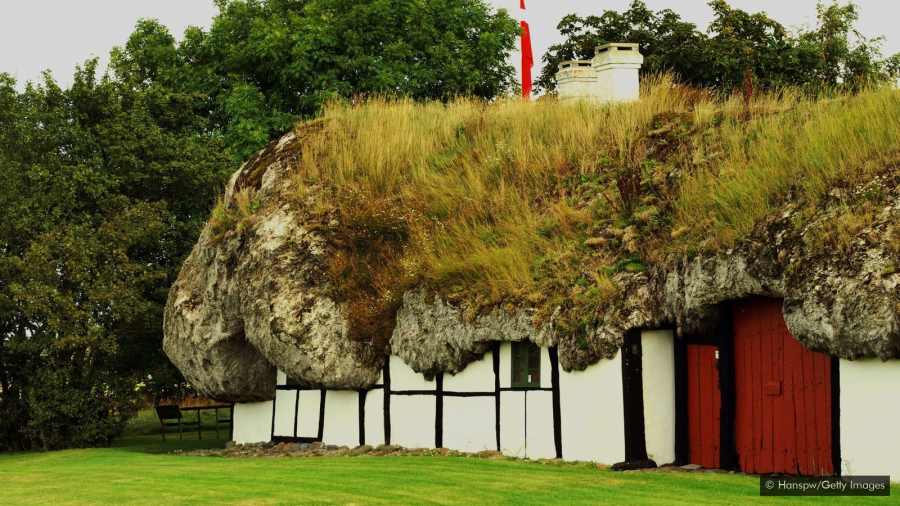
An average roof is more than 1 meter thick and weighs 35-40 tons.
Although eelgrass is often thought of as a type of “seaweed,” it is actually a type of seaweed, with leaves that can grow up to 2 meters long. It can be found all over the world, although most of it is concentrated in the Northern Hemisphere. Not only is eelgrass naturally fire-, rot-, and insect-resistant, but it also absorbs CO2, and because it doesn’t require high temperatures to be processed before use, it’s carbon neutral when harvested and used on site. Eelgrass becomes completely waterproof after about a year and is as insulating as mineral wool, a dense fibrous material made from melted glass, rock, or industrial waste. A roof can last hundreds of years—one of the remaining seaweed roofs on the island is more than 300 years old—by comparison, a typical concrete tile roof lasts about 50 years.
This combination of sustainability and heritage caught the eye of Copenhagen-based American architect Kathryn Larsen, who is currently researching how traditional seaweed thatching on the island of Læsø can be adapted to incorporate contemporary sustainable building materials around the world.
While studying at KEA Copenhagen School of Design and Technology, Larsen's thesis focused on seaweed roofs on the island of Læsø, a topic that was poorly documented in English. "It became a big mystery to me because most of the information was in Danish," she recalls. "I was really fascinated by it for a few years: I learned Danish and then I could learn more about it and come back to it over and over again. It became a real obsession."
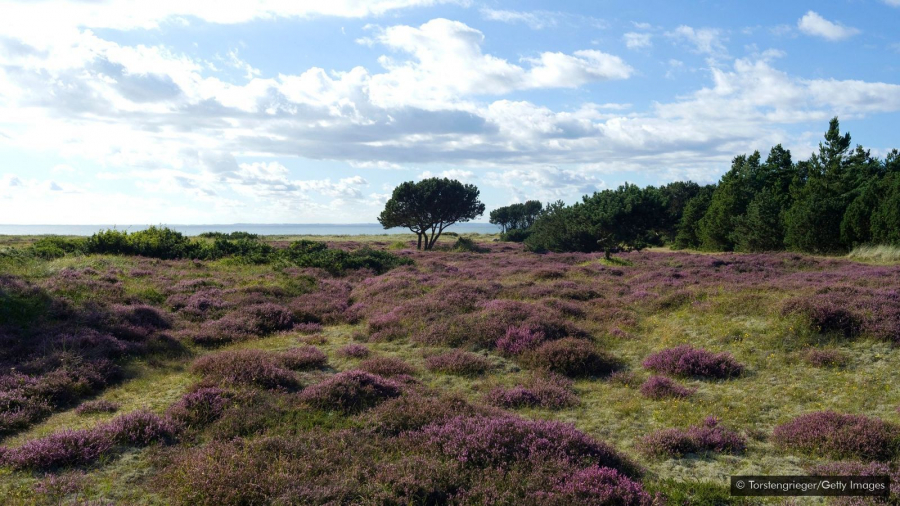
As Læsø island had few resources, the islanders looked out to sea for building materials.
After learning that her school had a supply of eelgrass from local seaweed farmers, Larsen began experimenting “just for fun.” She developed prefabricated panels to use on facades and roofs as a durable insulation layer to supplement the main insulation, and she installed these panels on the school’s roof to see how the eelgrass would react to other elements over time.
However, she soon realized she needed to install it somewhere more public. “A lot of people were really skeptical,” she says of using eelgrass. In late 2019, she began work on The Seaweed Pavilion, a project that incorporates seaweed panels into a wooden structure in the KEA courtyard. “I wanted people to sit underneath it and experience it for themselves. People are always surprised because they think it must smell or be slimy, so by having a lot of positive interactions with it, I hope to change that.”
“What I really want to convey is that this is a very natural installation,” she says, explaining that with this material you don’t need a damp proofing, which isn’t breathable. “You can use a lot of this material and still have air flowing through the building, not being trapped inside, so the whole building can breathe and the air quality is much better.”
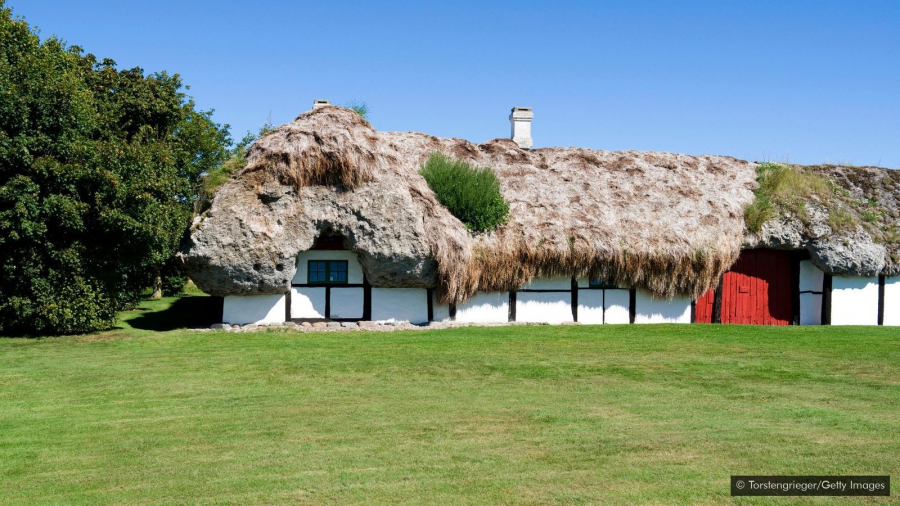
Roofs made from eelgrass can last for hundreds of years
Larsen wants to change the way the building industry views older techniques, which are not only “better for the environment because they use renewable natural resources, but can also build healthier buildings for us. Basically, we figured it out, then we lost all that knowledge, and now we’re digging ourselves into a bigger hole where the air quality in buildings is getting worse.”
Because eelgrass grows all over the world, she sees a lot of potential in turning it into a sustainable building material globally, “as long as people harvest and use it locally.”
The eelgrass she uses in the Seaweed Terrace is harvested and processed by Kurt Schierup. He uses the same harvesting and drying techniques as the women on Læsø, though he does it by machine rather than by hand. And though he only founded his eelgrass harvesting company, Møn Tang, in 2016, Schierup has been doing it since his childhood in the 1950s on the Danish island of Tærø, where eelgrass is exported internationally for upholstery, insulation, and mats. This small slice of history alone shows just how ubiquitous the material once was.

Today, only 36 seaweed-roofed houses remain on the island.
“When I was a kid, 50 years ago,” Johansen says, “everyone slept under eelgrass in Denmark. But then plastic came along, and it was cheap. So in 50 years all the knowledge about eelgrass disappeared.”
On Læsø, Johansen still has 10 roofs to replace. It's a long-term project, but one he says he doesn't want to finish "because it's easier to tell you the history when you come and see me repairing old houses." Visitors to Læsø are invited to watch him work on weekdays in the summer, where they can see firsthand "how it works, the materials, and how interesting it is."
He says eelgrass is part of world heritage. “You can come to Læsø and I can show you your own history from your own country,” because it was once commonly used all over the world – from the Dutch Wadden Sea where it was used to build seawalls to New England where people insulated their homes with Cabot’s Quilt insulation and soundproofing panels made from dried eelgrass.
"It has a huge history, which is quickly forgotten, and now I'm starting to tell that story. It's easy to tell the story when you're standing next to a really old roof, looking up at it and people say, 'What a funny material'."



























